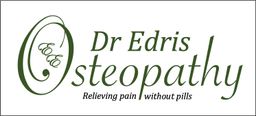Philosophy of care:
All of my medical training has been based on a philosophy described in
"The Four Tenets of Osteopathic Medicine"
1. The body is a unit and the person is a unit of body, mind, and spirit.
2. The body is capable of self-regulation, self-healing, and health maintenance.
3. Structure and function are reciprocally interrelated.
A change in any body structure will change the function of that structure.
4. Rational treatment is based upon an understanding of the basic principles of body unity, self-regulation, and the interrelationship of structure and function.
In my practice of Osteopathic Manipulation (OMT), I continuously find that the body is a profoundly integrated unit where everything is connected and therefore affected by every other part. I often find that the cause of a problem is located in a different part of the body from the pain or other symptom, and unless the problem is corrected, the symptoms will persist. One example of this would be when a problem in the ankle causes strain on the knee, hip, and low back with tension possibly extending all the way to the upper back, neck, and jaw. This could lead to tension headaches, jaw pain, neck pain, low back pain, hip pain, or knee pain. Treating the painful areas without treating the cause of pain may bring temporary relief, but as long as the problem remains, the symptoms will usually return.
I have learned to approach the body with respect and have found it most effective to gently engage with the natural properties of the body tissues rather than forcing the bones into "alignment". This allows the body structures to return to their natural positions in a more stable state of balance and is more likely to resolve the symptoms completely. My examination and treatments include the bones and muscles as well as all of the deeper tissues surrounding the organs in the abdomen and chest in order to discover the real cause and achieve longer lasting relief.
Education and Certifications
Board Certification by the American Osteopathic Board of Neuromusculoskeletal Medicine
Licensed by the Maryland Board of Physicians
Dr Edris completed his undergraduate studies in Neuroscience at Dickinson College. He graduated medical school with the inaugural class at Liberty University College of Osteopathic Medicine and completed his residency training specializing in Osteopathic Neuromusculoskeletal Medicine at the Greenbrier Valley Medical Center and West Virginia School of Osteopathic Medicine.
Dr Edris has completed additional training courses with the Osteopathic Cranial Academy, Sutherland Cranial Teaching Foundation, and Integrative Dry Needling as well as a course on Osteopathic Treatment for Pediatrics.
Osteopathy according to Dr Andrew T Still who first discovered and taught this approach to healing in 1874:
“First, Osteopathy is not a system of movements (techniques).
Second, neither Osteopathy nor its application to the patient is something that can be passed around on a platter. One must delve and dig for it themselves.
Third, its application to the patient must be given by reason and not by rule. Osteopathic physicians must be able to give reason for the treatment they give, not so much to the patient, but to themselves.
Neither am I operating a school to teach a lot of parrots, or turn out just another doctor. The field is already overcrowded with those who for hundreds of years have treated patients by rule rather than reason.”
We need your consent to load the translations
We use a third-party service to translate the website content that may collect data about your activity. Please review the details in the privacy policy and accept the service to view the translations.
